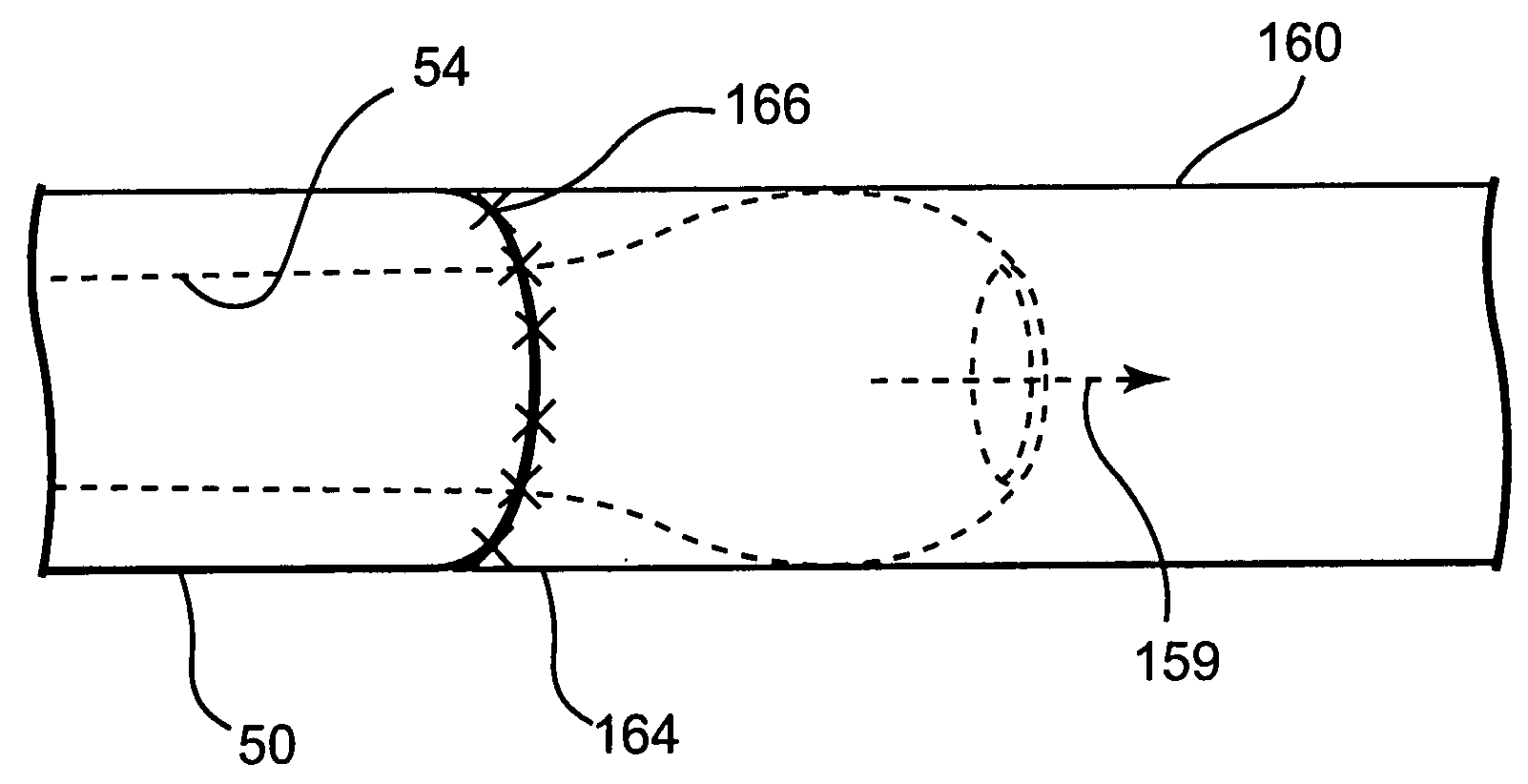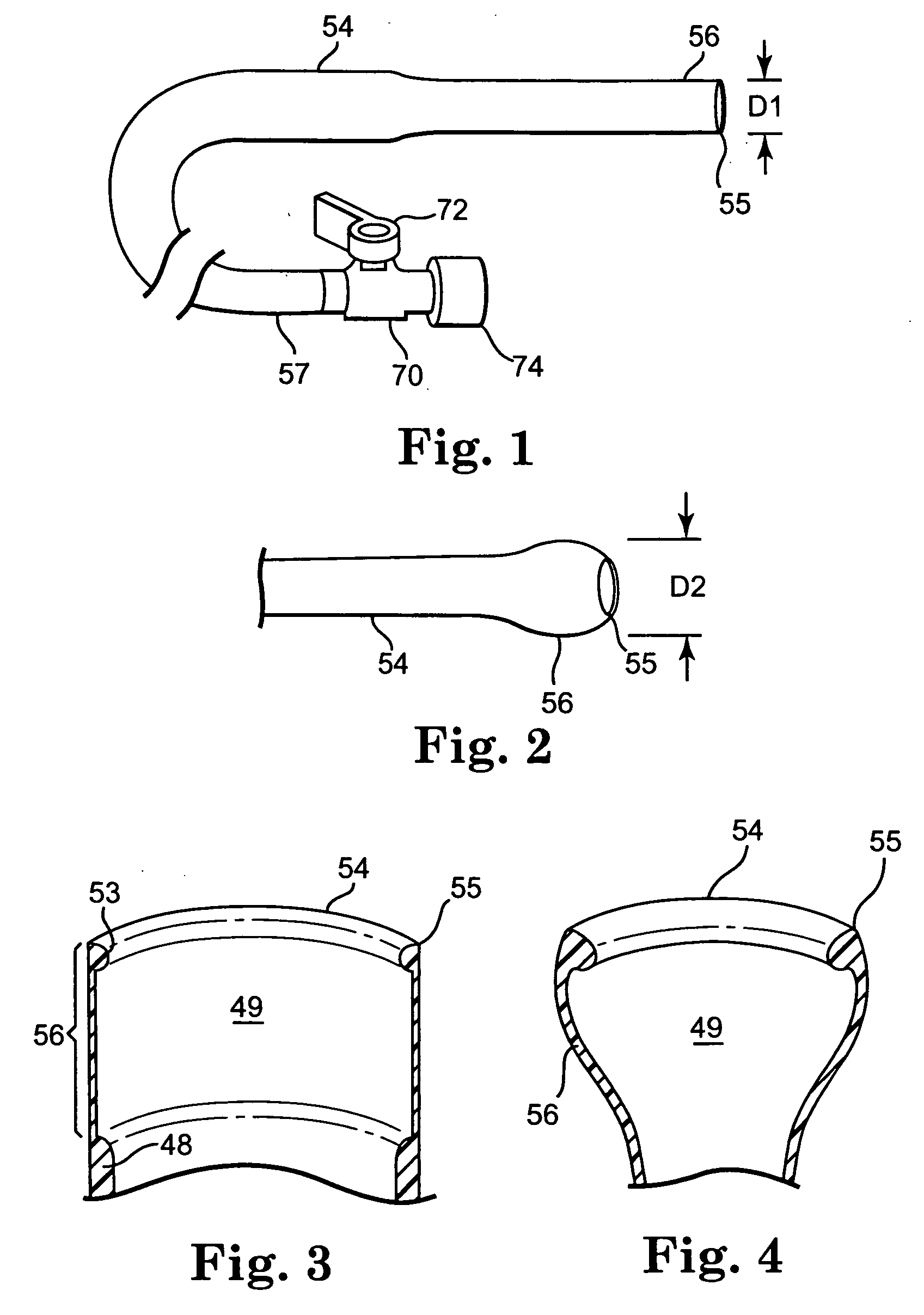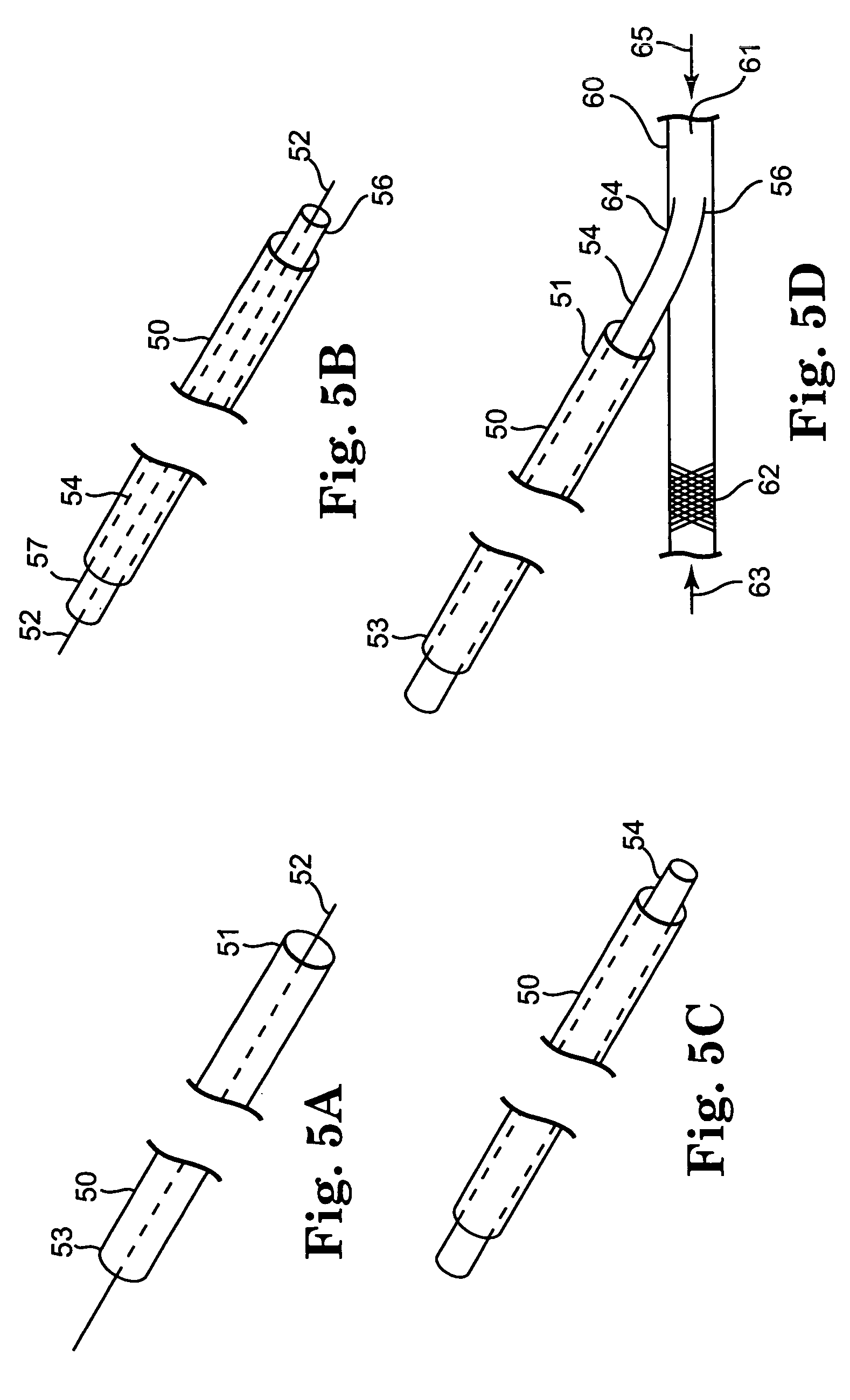Transconduit perfusion catheter
a transconduit and catheter technology, applied in the field of medical devices, can solve the problems of bleeding through the incision into the surgical field, ischemia, severe, etc., and achieve the effects of increasing the outer diameter of the distal region, reducing or eliminating blood flow through the arteriotomy, and increasing the pressure in the tub
- Summary
- Abstract
- Description
- Claims
- Application Information
AI Technical Summary
Benefits of technology
Problems solved by technology
Method used
Image
Examples
Embodiment Construction
[0030]FIG. 1 illustrates a transconduit perfusion catheter (TPC) 54 having generally a distal region 56, a distal tip 55, and a proximal region 57. In the embodiment illustrated, TPC 54 also has a valve 70 coupled to proximal region 57 and a handle 72 for opening and closing the valve. A piece of standard arterial tubing 74 is coupled to valve 70 as well. TPC 54 is adapted to be inserted into a vessel for which an end-to-side anastomosis is to be performed. In one application, TPC 54 is to be inserted into an arteriotomy in a coronary artery. In this example, TPC 54 can have an outer diameter, indicated at D1, of less than 2 millimeters in some embodiments, less than 1.5 millimeters in other embodiments, and between about 1 millimeter and 1.5 millimeters in various embodiments. TPC 54 has a lumen extending therethrough, for carrying a perfusing, oxygen carrying fluid.
[0031]FIG. 2 illustrates TPC 54 in one embodiment, having a distally expandable or swellable distal region 56. Dista...
PUM
 Login to View More
Login to View More Abstract
Description
Claims
Application Information
 Login to View More
Login to View More - R&D
- Intellectual Property
- Life Sciences
- Materials
- Tech Scout
- Unparalleled Data Quality
- Higher Quality Content
- 60% Fewer Hallucinations
Browse by: Latest US Patents, China's latest patents, Technical Efficacy Thesaurus, Application Domain, Technology Topic, Popular Technical Reports.
© 2025 PatSnap. All rights reserved.Legal|Privacy policy|Modern Slavery Act Transparency Statement|Sitemap|About US| Contact US: help@patsnap.com



